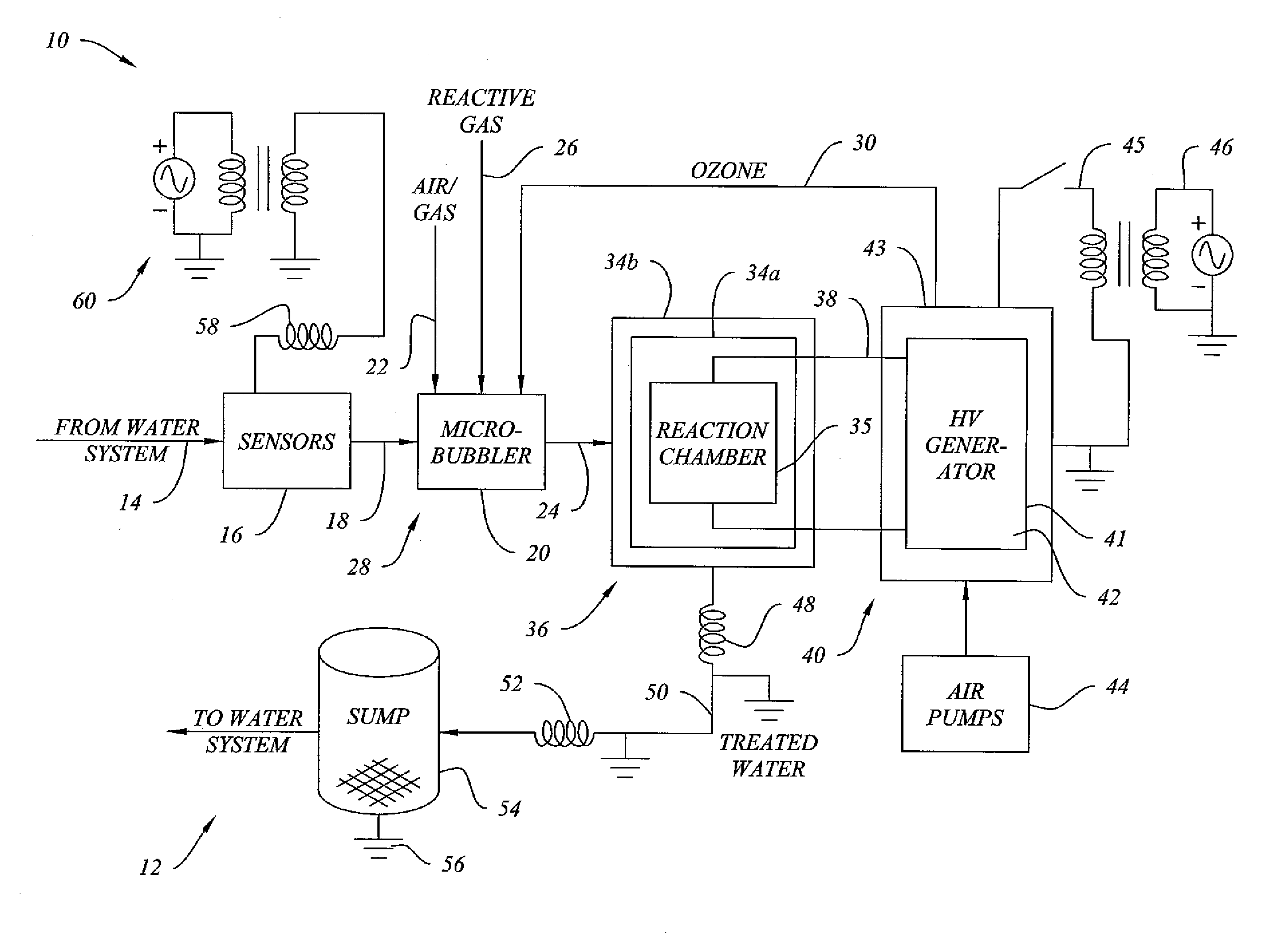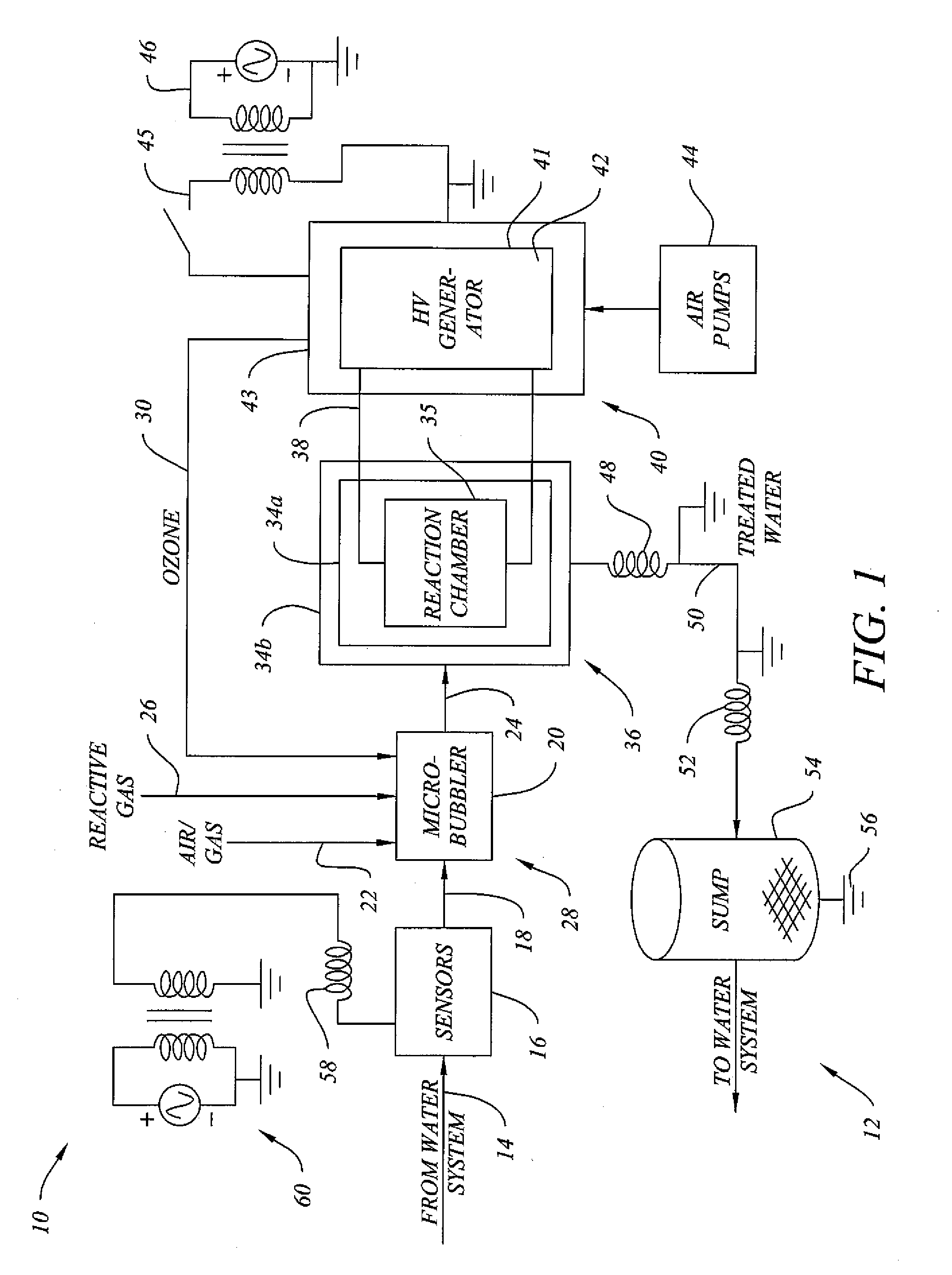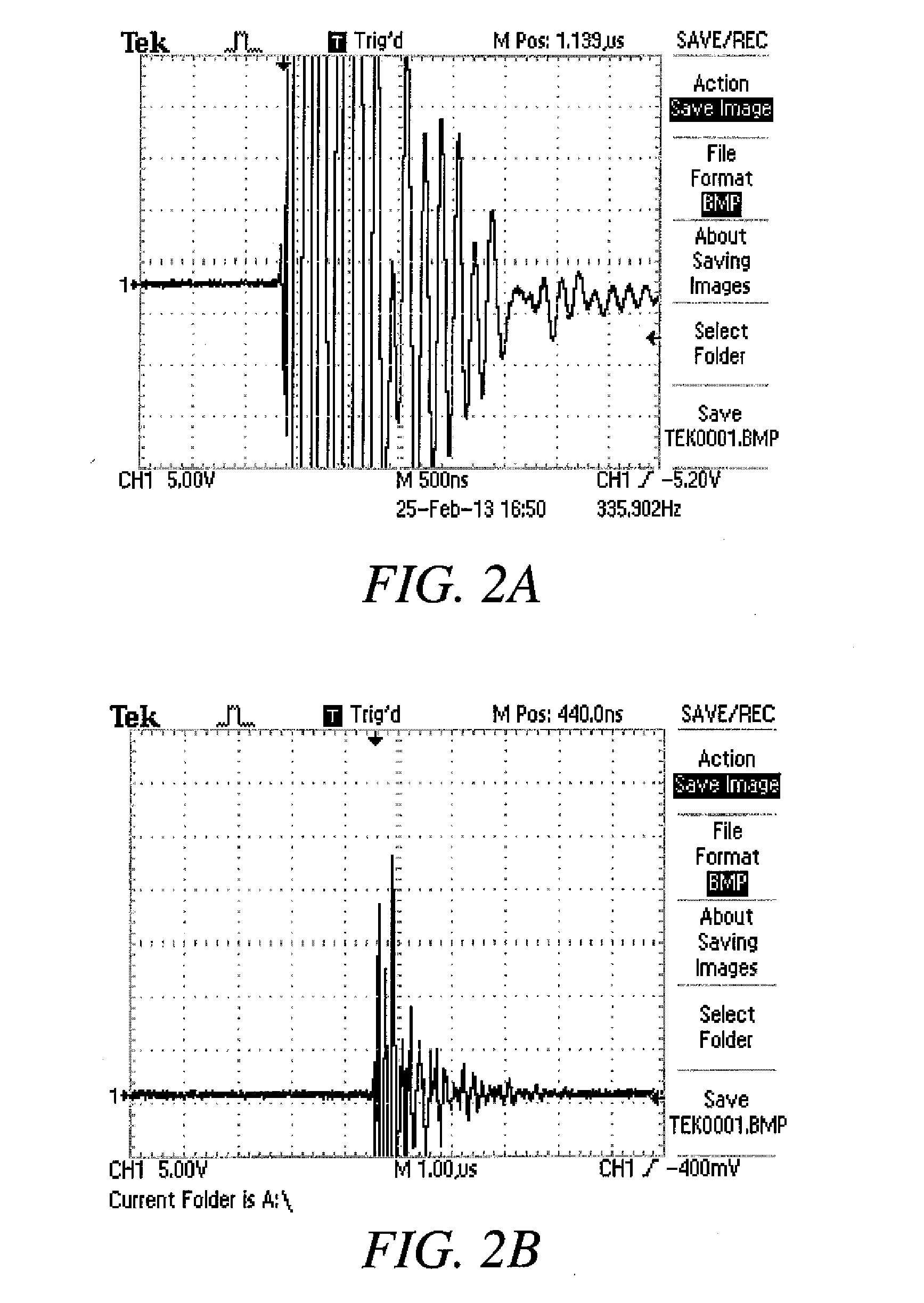System and Method for Treating Water Systems with High Voltage Discharge and Ozone
a technology of high-voltage discharge and water system, which is applied in the nature of treatment water, energy-based wastewater treatment, and refining by electric/magnetic means, etc. it can solve the problems of severely limiting the applicability of the existing prior art, utilizing an electromagnetic or electrolysis system that captures excess energy, and avoiding damage effects. , to achieve the effect of limiting the applicability, avoiding damage, and beneficial effect of water treatmen
- Summary
- Abstract
- Description
- Claims
- Application Information
AI Technical Summary
Benefits of technology
Problems solved by technology
Method used
Image
Examples
example 1a
[0031]Direct discharge into an unprotected system: In the first set of experiments, a pilot cooling tower was used. Components of this experimental system that correspond with the systems depicted in FIG. 1 are labeled according to the reference numbers in FIG. 1. A cooling tower (total volume 100 L) water system 12 was charged with water and the system was set to circulate. The water chemistry was monitored using an Advantage Control system and biological monitoring as performed using two in-house biological monitoring systems and a ChemTrak biological monitor. These systems are typically found or are similar to those typically found in larger scale commercial or industrial cooling tower operations. To incorporate the high voltage generator system into the cooling tower, a side-stream flow (stream 18) was pulled from the heat exchanger rack via a mechanical ball valve and 12 feet of 0.75 inch diameter clear flexible PVC tubing. This valve allows the system to change flow dynamics b...
example 1b
[0033]Direct discharge into a protected system: The experiment of 1A was repeated, but with a multiple ground protective system in place. Grounds were placed in a sump 54 and parts of the tubing (using a screw and wire wrapping as discussed above) throughout system. FIG. 3 shows that there is a significant reduction in the electromagnetic field in the water. Using the multiple ground system, it is now possible to run the high voltage discharge system for several hours continuously without causing problems to the electronic control and monitoring equipment used as part of the water system 12.
example 2
[0034]Bench Trials for Removal of Microorganisms: Four bench-level studies were conducted to determine the efficacy of a non-thermal plasma discharge in water to inactivate microorganisms. It is known that a plasma discharge in water will generate active oxygen species, UV radiation, and pressure field shock waves all of which can inactivate microorganisms. A plasma discharge can be achieved by increasing the electric field in a solution beyond its breakdown voltage. The breakdown voltage is dependent on the conductivity and the dielectric properties of the solution. It has been observed that a relationship exists between the input energy and the log reduction of the microorganisms in the system. It has also been documented that the input energy needed to achieve a one log reduction (known as D-value) in E. coli can vary from 14 J / L to greater than 366 J / L. As for experiments with certain species of pseudomonas, it has been reported that 85 kJ / L is the average input energy needed to...
PUM
| Property | Measurement | Unit |
|---|---|---|
| Electric potential / voltage | aaaaa | aaaaa |
| Electric potential / voltage | aaaaa | aaaaa |
| Frequency | aaaaa | aaaaa |
Abstract
Description
Claims
Application Information
 Login to View More
Login to View More - R&D
- Intellectual Property
- Life Sciences
- Materials
- Tech Scout
- Unparalleled Data Quality
- Higher Quality Content
- 60% Fewer Hallucinations
Browse by: Latest US Patents, China's latest patents, Technical Efficacy Thesaurus, Application Domain, Technology Topic, Popular Technical Reports.
© 2025 PatSnap. All rights reserved.Legal|Privacy policy|Modern Slavery Act Transparency Statement|Sitemap|About US| Contact US: help@patsnap.com



